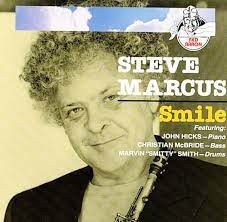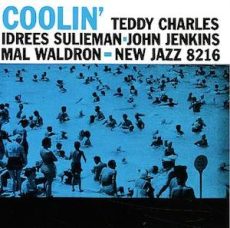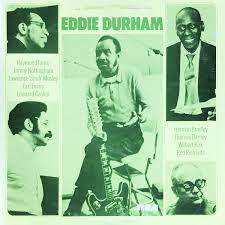
Daily Dose Of Jazz…
Samuel “Savoirfaire” Williams was born on September 22, 1973 in Chicago, Illinois. At the age of three he began playing violin at his parents’ church and two years later joined a group of child prodigies under the tutelage of Suzuki Violin instructor, Betty Haag. His first performance was at Chicago’s Orchestra Hall during a public television broadcast which became an annual event spanning more than 35 years.
He attended the Merit School of Music in Chicago, studying music theory while participating in youth orchestras including the City Youth Symphony, Chicago Youth Symphony Orchestra, Protégé, All-City and All-State. He took private lessons from Afro-Panamanian musician Joseph Williams when he was 16. During this time he played lead for the City Youth String Ensemble’s viola section, then received a scholarship at Interlochen where he sat in with vibraphonist Milt Jackson.
Meeting and performing with Wynton Marsalis while working at the Chicago Symphony Center, Williams continued his studies and busked on the streets to pay for violin lessons. During one of his street performances, guitarist Kenny Burrell observed his skill and invited him to collaborate with himself, Willie Pickens and Larry Gray on a Bebop performance at Chicago’s Jazz Showcase.
In 2000, he was voted into the Chicago Chapter of the Association for the Advancement of Creative Musicians (AACM), which earned him the moniker “Savoirfaire.” That same year, he began an apprenticeship with luthier Martin Sheridan to learn the art of violin-making, later owning the violin shop and managing it for three years.
After self-releasing three live albums, Bob Koester discovered his work and in 2004 Delmark Records produced the internationally acclaimed release Running Out of Time. Over the years, Savoirfaire has been invited to record with a plethora of artists in various genres and at international Jazz festivals.
In 2015, Williams founded the Chicago Gypsy Project with guitarist Dave Miller and bassist Charlie Kirchen. He continues to perform with his group Savoirfaire Jazz Quartet as well as busking on the streets, and in various venues throughout Chicago.
More Posts: bandleader,history,instrumental,jazz,music,violin

Daily Dose Of Jazz…
Steve Marcus was born September 18, 1939 in The Bronx, New York, and studied at the Berklee College of Music in Boston, Massachusetts between 1959 and 1961. He gained experience playing in the bands of Stan Kenton, Herbie Mann and Larry Coryell from 1963 to 1973.
His debut album as a leader included an arrangement of the Beatles’ song, Tomorrow Never Knows, which also was the album’s title. He worked with jazz drummer Buddy Rich for the last twelve years of the drummer’s life. After Rich died, Marcus led the band and renamed it Buddy’s Buddies.
Saxophonist Steve Marcus transitioned on September 25, 2005 in New Hope, Pennsylvania. He was 66.
More Posts: bandleader,history,instrumental,jazz,music,saxophone

Daily Dose Of Jazz…
Bryan Spring was born on August 24, 1945 in London, England. A self-taught drummer beginning at the age of six, he later studied with Philly Joe Jones. He led and co-led his own trios and quartets from the mid-1970s to the early 1990s with Don Weller and also Art Themen.
The new millennium saw Bryan collaborating with Mark Edwards and Andy Cleyndert. He has been a member of Bill Le Sage’s Bebop Preservation Society, Alan Skidmore’s Quartet, Klaus Doldinger’s Passport, and various line-ups led by Stan Tracey.
He has worked with other leading British jazz musicians, including Tubby Hayes, Dick Morrissey, Bobby Wellins, as well as accompanying American musicians, notably George Coleman and Charlie Rouse, when they were visiting the UK.
Drummer Bryan Spring, who is sometimes credited as Brian and has led/co-led two recording sessions and played on eighteen as a sideman, continues to be active on the jazz scene.
More Posts: bandleader,drums,history,instrumental,jazz,music

Daily Dose Of Jazz…
Addison Gerald Farmer was born on August 21, 1928 in Council Bluffs, Iowa and was born an hour after his twin brother Art, reportedly at 2201 Fourth Avenue. Their parents divorced when the boys were four, and their steelworker father was killed in a work accident not long afterward. He moved with his grandfather, grandmother, mother, brother and sister to Phoenix, Arizona when he was still four.
Addison and his brother moved to Los Angeles, California in 1945 and attended the music-oriented Jefferson High School. There they gained music instruction and met other developing musicians such as Sonny Criss, Ernie Andrews, Big Jay McNeely and Ed Thigpen. The brothers earned money by working in a cold-storage warehouse and by playing professionally.
Taking bass lessons from Frederick Zimmermann, he went on to study at Juilliard and the Manhattan School of Music. By late 1945, Farmer was with Johnny Alston and His Orchestra recording for the Bihari Brothers’ Modern Music label, and shortly after on the Blue Moon label. He later recorded with Teddy Edwards’s band. Farmer played in several groups with his brother, including in ensembles led by Benny Golson, Gigi Gryce, Mose Allison, Jay McShann, Charlie Parker, and Miles Davis.
Bassist Addison Farmer, who recorded extensively for Prestige Records, transitioned from sudden unexpected death syndrome on February 20, 1963, in New York City at the age of 34.
More Posts: bass,history,instrumental,jazz,music

Daily Dose Of Jazz…
Edward Durham was born on August 19, 1906 in San Marcos, Texas to Joseph Durham, Sr., and Luella Rabb Durham. From an early age he performed with his family in the Durham Brothers Band. At the age of eighteen, he began traveling and playing in regional bands.
From 1929 Eddie started experimenting to enhance the sound of his guitar using resonators and megaphones. In 1935 he was the first to record an electrically amplified guitar with Jimmie Lunceford in Hittin’ the Bottle that was recorded in New York for Decca.
In 1938, Durham wrote I Don’t Want To Set The World On Fire with Bennie Benjamin, Sol Marcus, and Eddie Seiler. During the 1940s he created Eddie Durham’s All-Star Girl Orchestra, an all black female swing band that toured the United States and Canada.
That same year Eddie recorded single string electric guitar solos with the Kansas City Five or Six, which were both smallish groups that included members of Count Basie’s rhythm section along with the tenor saxophone playing of Lester Young. The orchestras of Bennie Moten, Jimmie Lunceford, Count Basie and Glenn Miller took great benefit from his composing and arranging skill.
Guitarist, trombonist, composer and arranger Eddie Durham, who was one of the pioneers of the electric guitar in jazz, transitioned on March 6, 1987.
More Posts: arranger,guitar,history,instrumental,jazz,music,trombone



